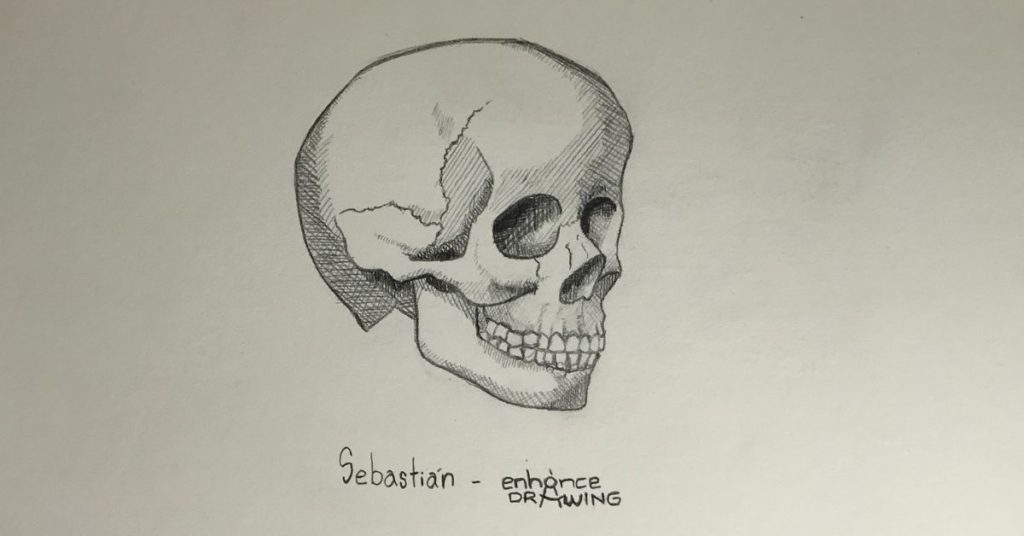
One of the most common ways artists start drawing is by copying other artists’ creations. And when we discover we’re good at it, we keep doing it and get better over time. But then we reach a point where we want to create something we can call our own, so we try to draw from our imagination, and it doesn’t quite work as we expected. So how can we draw without copying?
Most artists learn to draw without copying by studying the subject they want to draw in-depth. Repetitively drawing the same object from different perspectives and positions can help the artist understand it, allowing him to draw it without copying it or using references.
But merely drawing something over and over again won’t make you reach your goal. I want to share the steps and theory behind this drawing process with you so you can draw without copying as quickly as possible.
How To Draw Without Copying
First, I want to clarify that we are not talking about tracing when we say copying. We are talking about observational drawing, which means we see an image and make a freehand replica of it—sometimes using rulers or other drawing tools. That clear, learning to draw without copying is relatively simple, but it takes time, so prepare yourself to be patient and follow these four steps:
1. Identify Your Drawing Level
Since you already have some experience drawing, this shouldn’t be too complicated. Our focus here is to set realistic goals, so I want you to decide what object you would consider a moderate challenge to draw without copying and start this drawing practice with it. I will pick skulls for this exercise because they are a challenge for me right now.
I would avoid picking something too complicated. Don’t lose track of your main goal here: learn to draw without copying.
2. Find References And Copy A Lot
Ironically, to draw without copying, you have to copy a lot, but in the right way. I use this great tool to find 3D references for almost anything. For skulls, I found this 3D model. Look for the reference of what you want to draw, analyze it, and start drawing it from different perspectives, like shown below – You can also use skulls if you want!
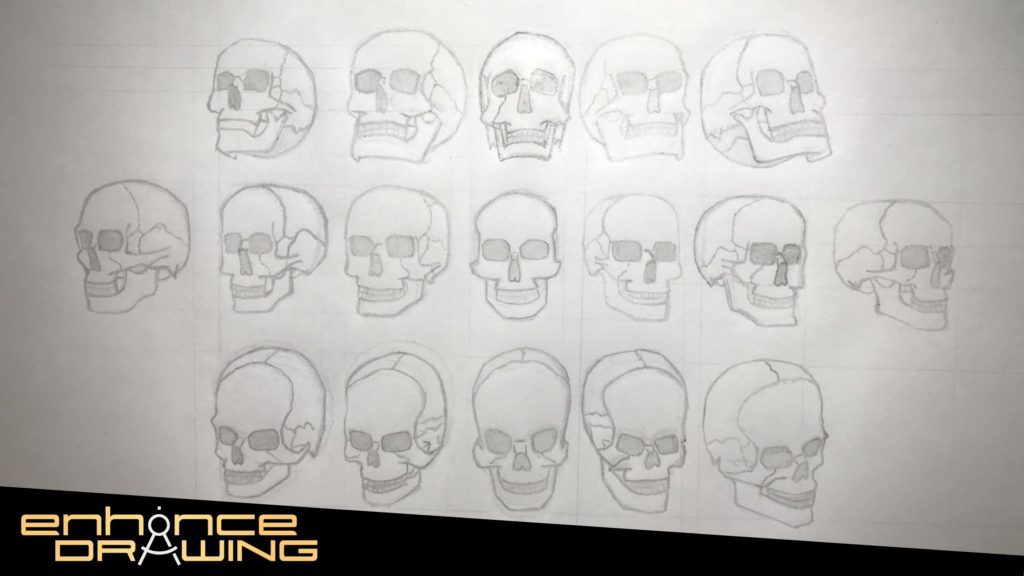
Although I started drawing the skull from many different perspectives, you can decide if you prefer to sketch it from the front a couple of times before moving to the next position. The important thing is to draw it as many times as you can, trying to understand its proportions and store the picture in your brain so you can start illustrating it without using references. Make corrections if necessary, but again, don’t focus on the details too much; just finish the exercise and take notes of what you can do better next time.
3. Repeat And Connect What You Learned
Once you have done exercise number 2 multiple times, you can pass over this one and start trying to draw skulls from memory. But if you want to practice more and then possibly find ways to be more creative, you can repeat what we did with skulls and use another reference. I will pick simple cups for this one and do the same exercise, reinforcing perspective.
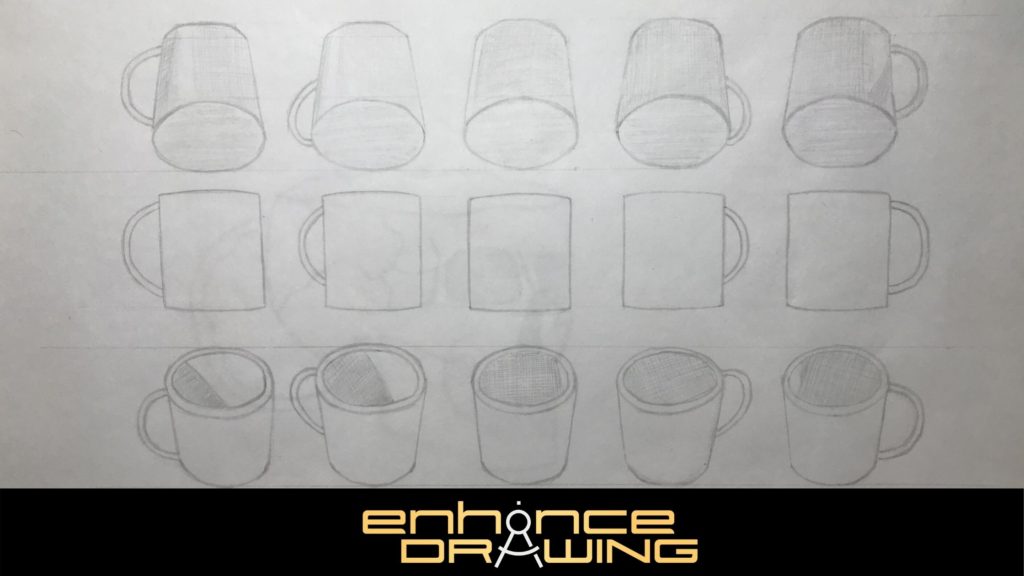
The reason we’re doing this is to give your brain the tools and references it needs to be able to draw without copying anything else. The more tools you give it, the more opportunities you will have to draw something entirely yours.
When you can draw without copying is because you have a full and complete scan of a picture inside your brain.
4. Start Drawing Without Copying
Use the knowledge you acquired drawing the model you picked and sketch it without any reference. You will find some inaccuracies initially, and that’s normal, but they will disappear over time. Compare the result with your previous sketches or the 3D model, see what you did wrong, and try to fix it in the next attempt. If you feel like you need to sketch the drawing multiples times again, by all means, do it. I have sometimes drawn the same model 5-10 times, from different perspectives, to sketch it without using more references. You just have to be patient and keep drawing.
For this exercise, I thought it would be nice to combine what we learned and make something new. What if now that we have such a comprehensive knowledge about skulls and cups, we try to mix them?
Here’s my result!
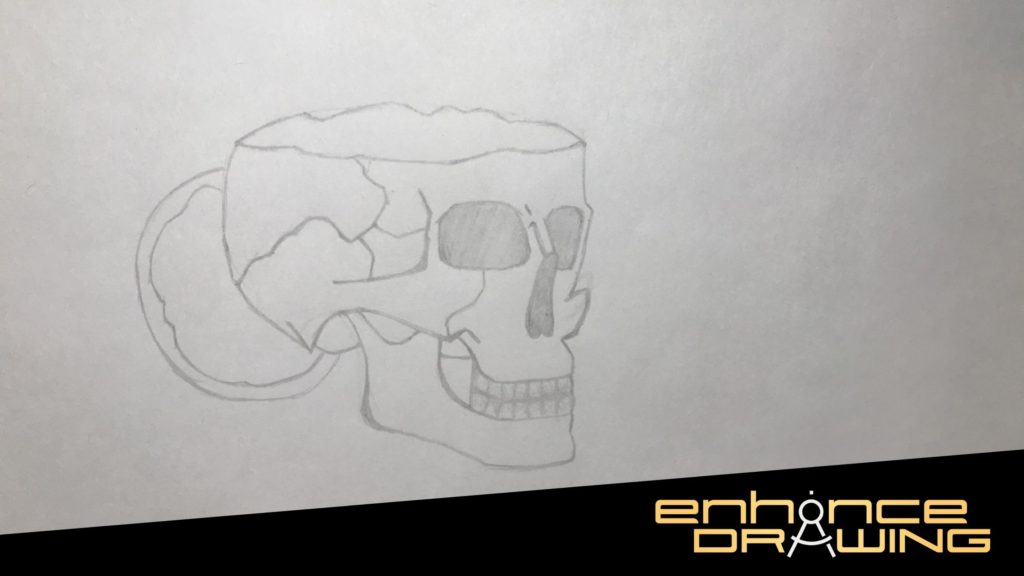
Edit 1
After 3 days, and zero extra references, I’m drawing skulls sketches under 10 minutes each, and they’re turning out better and better.
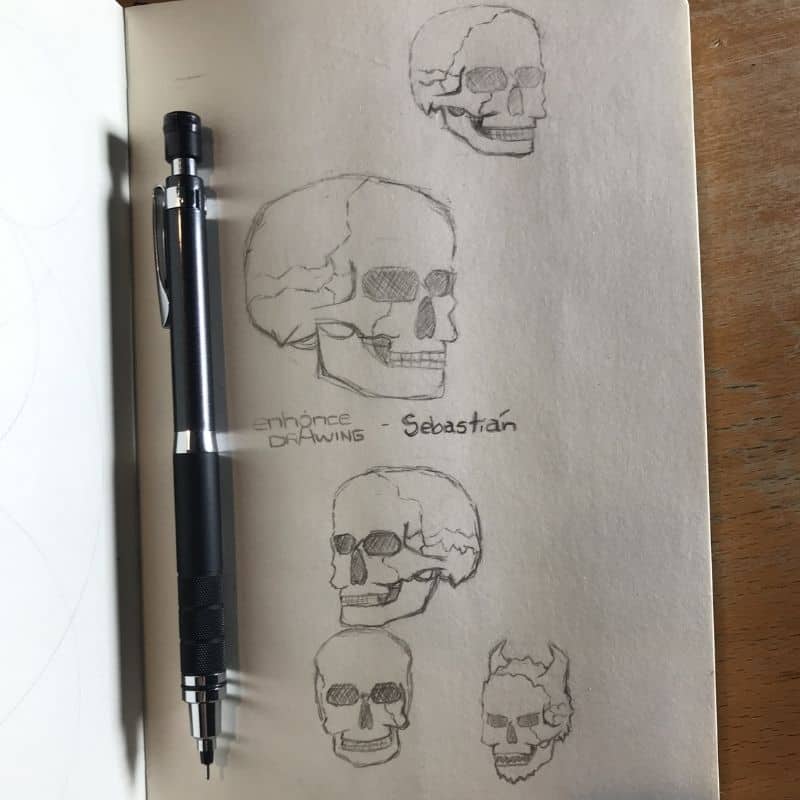
Edit 2
I continued drawing skulls, and this is how I can draw them after 15 days, without using any references, just memory!
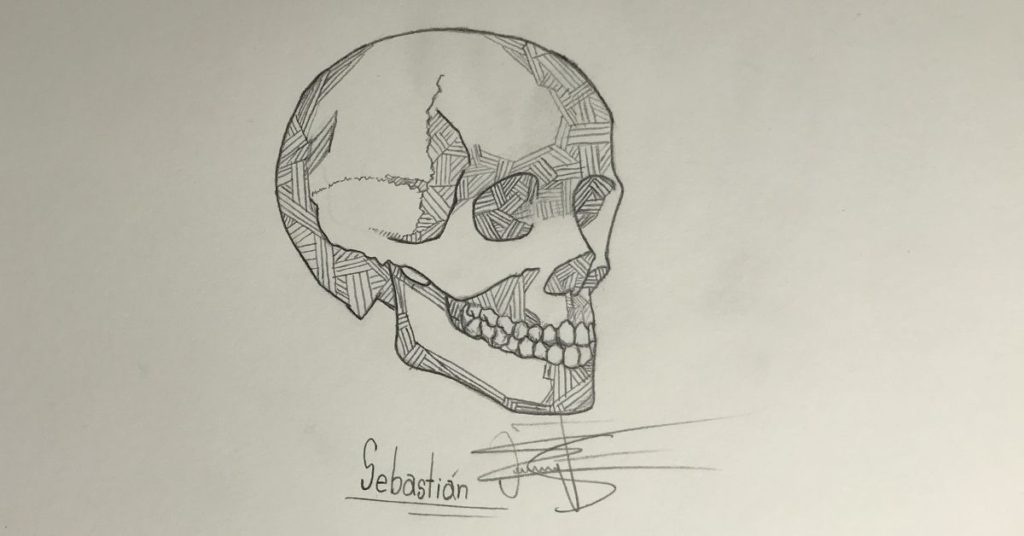
Do try this exercise! It will be challenging initially, but it is soo much worth you will not regret it.
I hope this exercise was useful to you as it was for me. I’ll be posting a new blog explaining how to draw from imagination soon!
How To Further Improve Your Drawing-Without-Copying Skills
You took the initial step to improve how you draw what you see in your head and a bit about drawing from imagination. But to be an even more complete drawing artist, there’s still much to be done.
I like to see drawing this way: it is the artistic equivalent of writing. If you teach you how to write the letter “a” and then ask you to write a word with that knowledge, the result won’t be anything but many a-letters together. But if I teach you how to write the letter “p” and ask you to write a word, you may create the word “papa”.
It’s the same in art and drawing. If you know perspective, you know proportions, and you know anatomy, nothing is stopping you from drawing humans. So if you want to continue improving your drawing skills, you have to draw a lot and study the drawing principles. Start by the ones that interest you the most or the ones you like the most; anything new you learn to do will improve your drawing skills.
I personally like drawing manga a lot, so I’m always looking for new things to learn about this style and keep improving my skills.
How To Draw From Imagination
Drawing without copying is one thing, but drawing from imagination is something almost entirely different. Here you don’t have a clear, either complete scan of the image you want to sketch. So how can you draw from imagination?
Most artists learn to draw from imagination by combining subjects they know into new creations. For instance, artists can combine basic knowledge about human anatomy with basic knowledge about animal anatomy and draw characters applying the two.
So as you see, what you would be applying to learn how to draw without copying can still be used for drawing from imagination, but more like in exercise number 4, where we experiment and create something new.
And like all things, getting better at something requires experience and practice, so the more you do these types of exercises, the better your drawings from imagination will become.
How To Get Inspired Without Copying Others’ Drawings
Getting inspired without copying can be as simple or complicated as you want it to be. Many drawing artists will try to draw the most amazing things but then realize that was not the best way to approach the problem. So how can we frequently get new ideas to draw?
The answer is in front of your eyes at all times. See all the objects that are surrounding you, pick whichever one, and draw it. It could be a pile of books you could shape to be the stairs to the door of knowledge, or it could be the mess of cables behind our desks representing how our neurons connect and produce thoughts.
Even if you don’t have an idea to transform what you see into a new thing, merely drawing as is would be enough. Most inspiration and ideas come when you’re already drawing, not when you’re thinking about what to draw.
Copying The Works Of Other Artists Is Not Bad
I’ve noticed many people seem to worry a lot about this, and I wanted to clarify this is not bad if your intentions are good. Unless you’re copying a drawing to claim it yours or sell it, copying other artists’ work is a great way to meet them through their strokes and understand how they draw, helping other artists learn a lot. If you have a person or character you admire very much, by all means, draw them and test your skills, there’s nothing wrong with it. You do it because you care, and you want to express that through your lines, and that’s art.
Everything we draw is a representation or combination of something we have seen before, so we are always copying.
Happy drawing you all!

